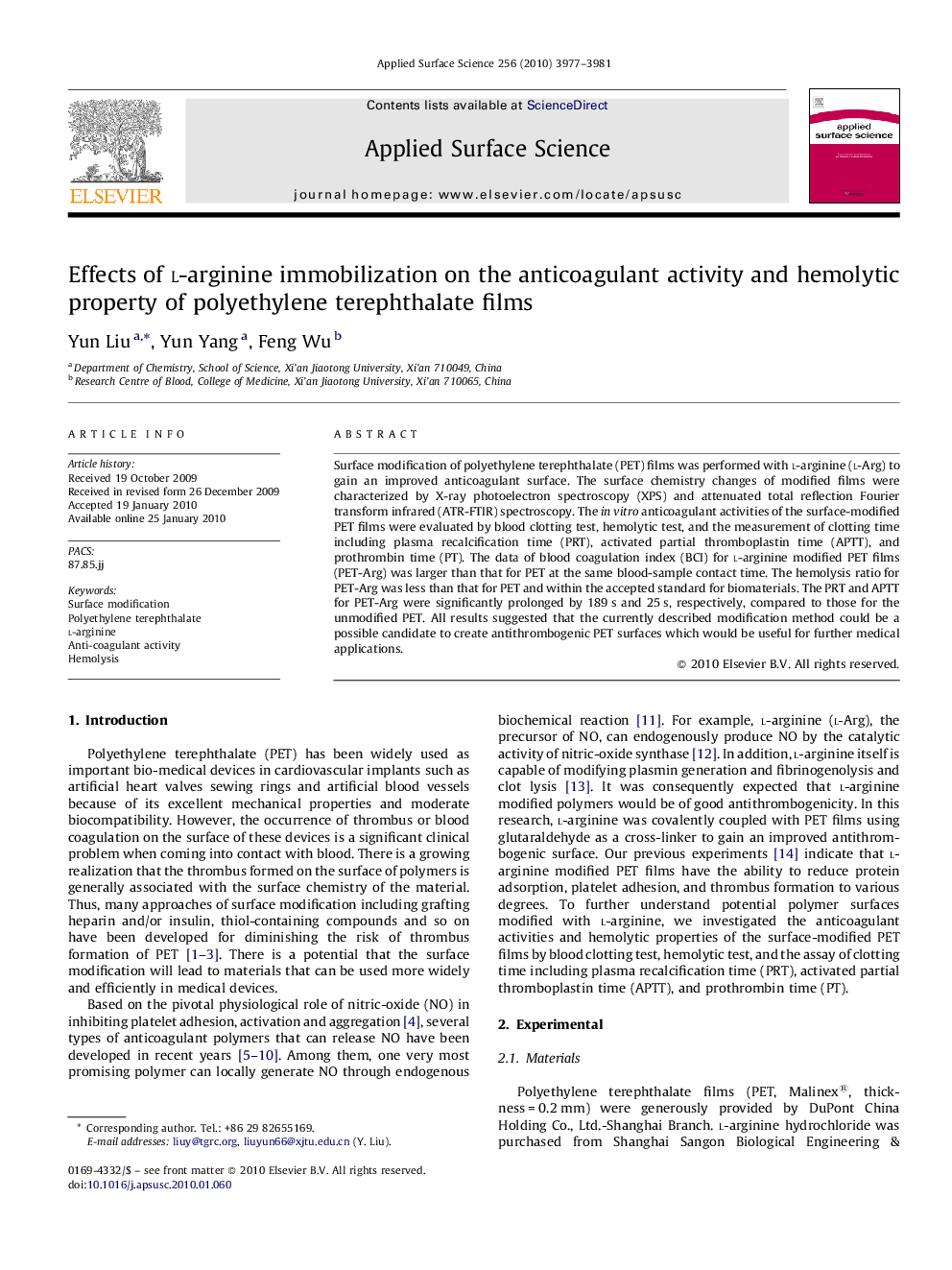| Article ID | Journal | Published Year | Pages | File Type |
|---|---|---|---|---|
| 5360532 | Applied Surface Science | 2010 | 5 Pages |
Abstract
Surface modification of polyethylene terephthalate (PET) films was performed with l-arginine (l-Arg) to gain an improved anticoagulant surface. The surface chemistry changes of modified films were characterized by X-ray photoelectron spectroscopy (XPS) and attenuated total reflection Fourier transform infrared (ATR-FTIR) spectroscopy. The in vitro anticoagulant activities of the surface-modified PET films were evaluated by blood clotting test, hemolytic test, and the measurement of clotting time including plasma recalcification time (PRT), activated partial thromboplastin time (APTT), and prothrombin time (PT). The data of blood coagulation index (BCI) for l-arginine modified PET films (PET-Arg) was larger than that for PET at the same blood-sample contact time. The hemolysis ratio for PET-Arg was less than that for PET and within the accepted standard for biomaterials. The PRT and APTT for PET-Arg were significantly prolonged by 189Â s and 25Â s, respectively, compared to those for the unmodified PET. All results suggested that the currently described modification method could be a possible candidate to create antithrombogenic PET surfaces which would be useful for further medical applications.
Related Topics
Physical Sciences and Engineering
Chemistry
Physical and Theoretical Chemistry
Authors
Yun Liu, Yun Yang, Feng Wu,
